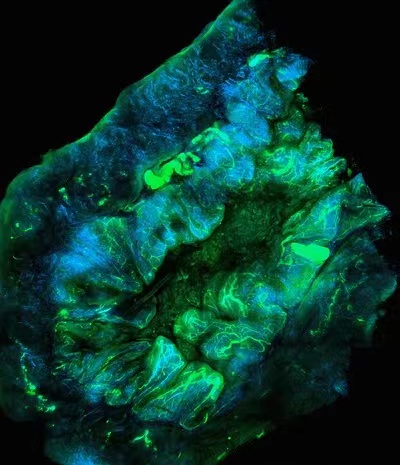创新背景
神经母细胞瘤是在儿童中发现的最常见的实体肿瘤,约占所有儿童癌症相关死亡的15%。肿瘤由某些类型的神经细胞发展而来,最常在腹部发现。1岁以上确诊的儿童往往对治疗无效或在以后复发,这意味着迫切需要新的治疗方案。世界癌症研究中心的首席执行官海伦·里彭博士说:“每年,英国大约有100个家庭收到他们的孩子患上神经母细胞瘤的毁灭性消息。不幸的是,癌症通常在相对较晚的阶段被发现,需要加强治疗。
创新过程
在老鼠身上的研究结果显示,这种方法使用微小的气泡直接向肿瘤细胞传递疗法,减少了肿瘤的生长,提高了生存率。
这项研究发表在《先进功能材料》杂志上,由世界癌症研究组织资助,现在提供了一种新的潜在治疗方法。MYCN是一种与不良预后相关的基因,在约20%的神经母细胞瘤病例中发现其突变或过度活跃。该基因通常在胎儿发育期间表达,并参与细胞生长和发育。神经母细胞瘤细胞持续表达过多的MYCN,导致细胞生长和分裂失控,阻止癌细胞死亡。

伦敦大学学院大奥蒙德街儿童健康研究所的研究人员现在找到了一种抑制MYCN的方法,方法是将一种名为siRNA的特定类型的遗传物质直接注入肿瘤细胞。他们开发了纳米颗粒——或称微小气泡——利用肿瘤周围的渗漏血管和某些只存在于肿瘤细胞上的特征来靶向肿瘤。
绝大多数通过注射的纳米颗粒被放置在肿瘤上,成功地关闭了导致癌症的MYCN基因。这种疗法使肿瘤生长速度变慢,并延长了小鼠在癌症中存活的时间。

该研究的资深作者、伦敦大学学院GOS ICH的Stephen Hart教授说:“这些发现表明,这种通过纳米颗粒传递MYCN siRNA的方法是一种新的潜在的神经母细胞瘤治疗方法。下一步将是开发扩大生产到临床分级的方法,并表明治疗是安全的。目前的治疗方法,如手术、放射线和化疗,在移除原发性肿瘤方面是有效的,但不幸的是,在许多情况下,肿瘤会在身体的其他部位复发,这就更难治疗了。我们希望这种疗法可以增强传统疗法,并提供一种针对这些新的肿瘤部位的治疗方法。”
创新价值
这种新方法使用微小的气泡直接向肿瘤细胞传递的疗法,减少了肿瘤的生长,提高了生存率,为患者及其家人提供了希望,为有效的新治疗方案铺平了道路。
创新关键点
研究人员开发了纳米颗粒——或称微小气泡——利用肿瘤周围的渗漏血管和某些只存在于肿瘤细胞上的特征来靶向肿瘤。绝大多数通过注射的纳米颗粒被放置在肿瘤上,成功地关闭了导致癌症的MYCN基因。
创新主体
伦敦大学学院(University College London,简称:UCL ),1826年创立于英国伦敦,是一所公立研究型大学,为伦敦大学联盟的创校学院、罗素大学集团和欧洲研究型大学联盟创始成员,被誉为金三角名校和“G5超级精英大学”之一。
UCL是伦敦的第一所大学,以其多元的学科设置著称,于REF 2014 英国大学官方排名中,位列全英之冠,享有最多的科研经费。UCL的医学、解剖学和生理学、建筑学、教育学、考古学、计算机科学、计算金融学等学科排名均位居世界前列,与LSE并称为“英国现代经济学研究的双子星”;其人文学院颁发的奥威尔奖则是政治写作界的最高荣誉。
Using tiny bubbles to help treat a common childhood cancer
The method, which uses tiny air bubbles to deliver the therapy directly to tumor cells, reduced tumor growth and improved survival, results in mice showed.
The study, published in the journal Advanced Functional Materials and funded by the World Cancer Research Organisation, now offers a new potential treatment. MYCN is a gene associated with poor prognosis and is found to be mutated or overactive in about 20% of neuroblastoma cases. The gene is normally expressed during fetal development and is involved in cell growth and development. Neuroblastoma cells consistently express too much MYCN, which leads to uncontrolled cell growth and division, preventing cancer cell death.
Researchers at the UCL Great Ormond Street Institute of Child Health have now found a way to inhibit MYCN by injecting a specific type of genetic material called siRNA directly into tumour cells. They developed nanoparticles -- or tiny bubbles -- to target tumors using leaky blood vessels around them and certain features found only on tumor cells.
The vast majority of the injected nanoparticles were placed on tumors and successfully switched off the MYCN gene, which causes cancer. The treatment slowed tumor growth and extended the time the mice survived cancer.
Senior author of the study, Professor Stephen Hart of UCL GOS ICH, said: "These findings suggest that this method of delivering MYCN siRNA via nanoparticles is a new potential treatment for neuroblastoma. The next step will be to develop ways to scale up production to clinical grade and show that the treatment is safe. Current treatments, such as surgery, radiation, and chemotherapy, are effective in removing primary tumors, but unfortunately, in many cases the tumors will recur in other parts of the body, which is more difficult to treat. We hope this therapy can augment traditional therapies and provide a therapeutic approach to target these new tumor sites."
智能推荐
临床医学创新思维 | 治疗昏迷要从意识研究入手
2022-08-01从昏迷的难题——意识障碍入手,研究生理意义上的意识问题,将昏迷纳入医疗考虑,探究昏迷和意识的本质。
涉及学科涉及领域研究方向